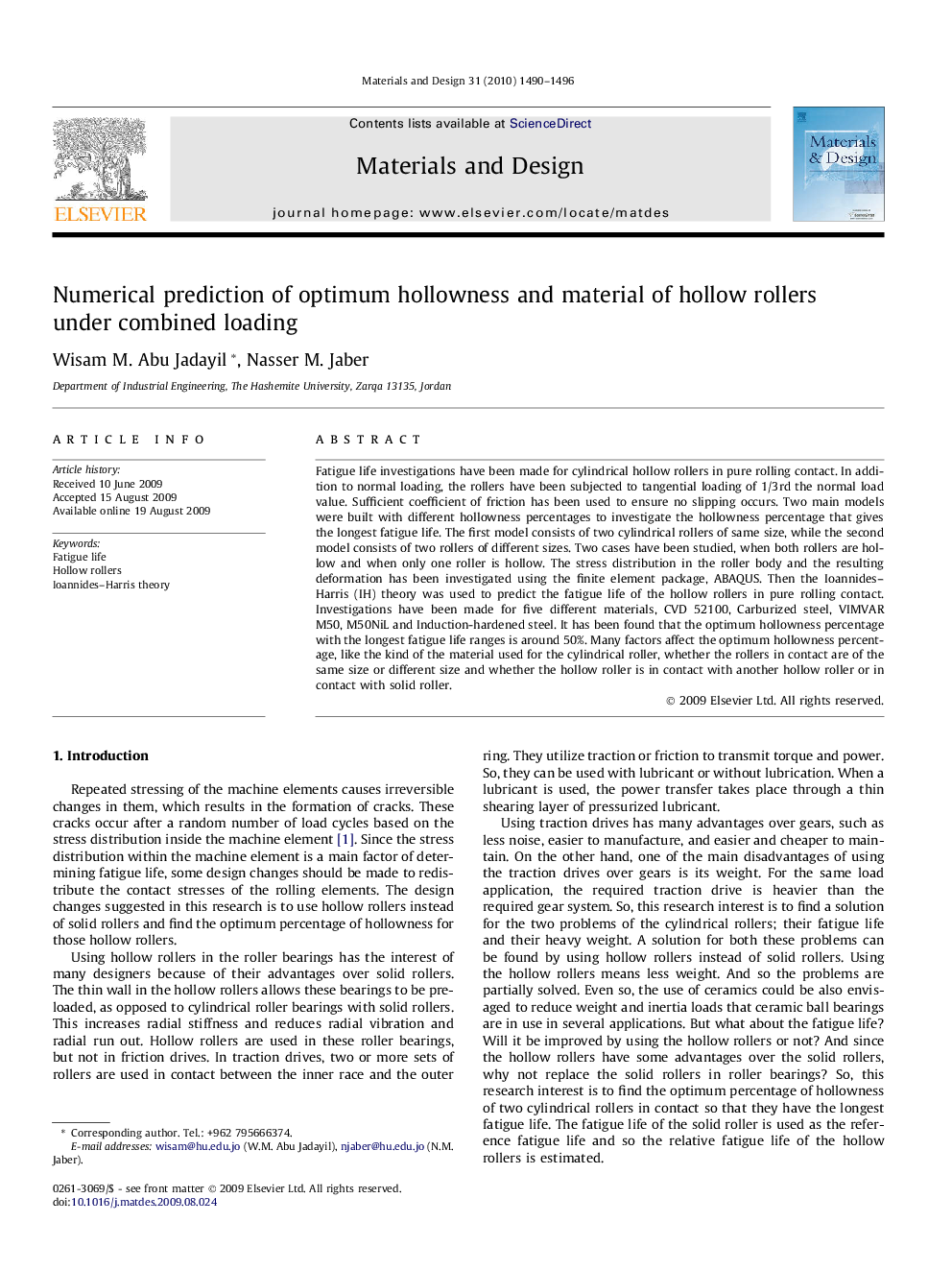| Article ID | Journal | Published Year | Pages | File Type |
|---|---|---|---|---|
| 832520 | Materials & Design (1980-2015) | 2010 | 7 Pages |
Fatigue life investigations have been made for cylindrical hollow rollers in pure rolling contact. In addition to normal loading, the rollers have been subjected to tangential loading of 1/3rd the normal load value. Sufficient coefficient of friction has been used to ensure no slipping occurs. Two main models were built with different hollowness percentages to investigate the hollowness percentage that gives the longest fatigue life. The first model consists of two cylindrical rollers of same size, while the second model consists of two rollers of different sizes. Two cases have been studied, when both rollers are hollow and when only one roller is hollow. The stress distribution in the roller body and the resulting deformation has been investigated using the finite element package, ABAQUS. Then the Ioannides–Harris (IH) theory was used to predict the fatigue life of the hollow rollers in pure rolling contact. Investigations have been made for five different materials, CVD 52100, Carburized steel, VIMVAR M50, M50NiL and Induction-hardened steel. It has been found that the optimum hollowness percentage with the longest fatigue life ranges is around 50%. Many factors affect the optimum hollowness percentage, like the kind of the material used for the cylindrical roller, whether the rollers in contact are of the same size or different size and whether the hollow roller is in contact with another hollow roller or in contact with solid roller.
